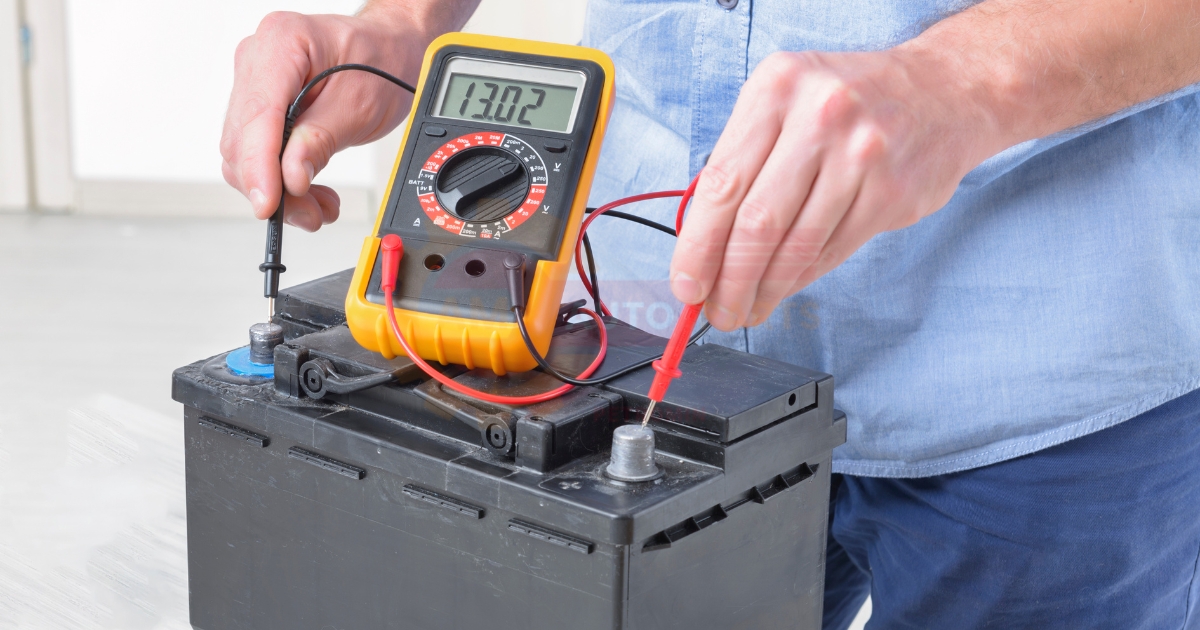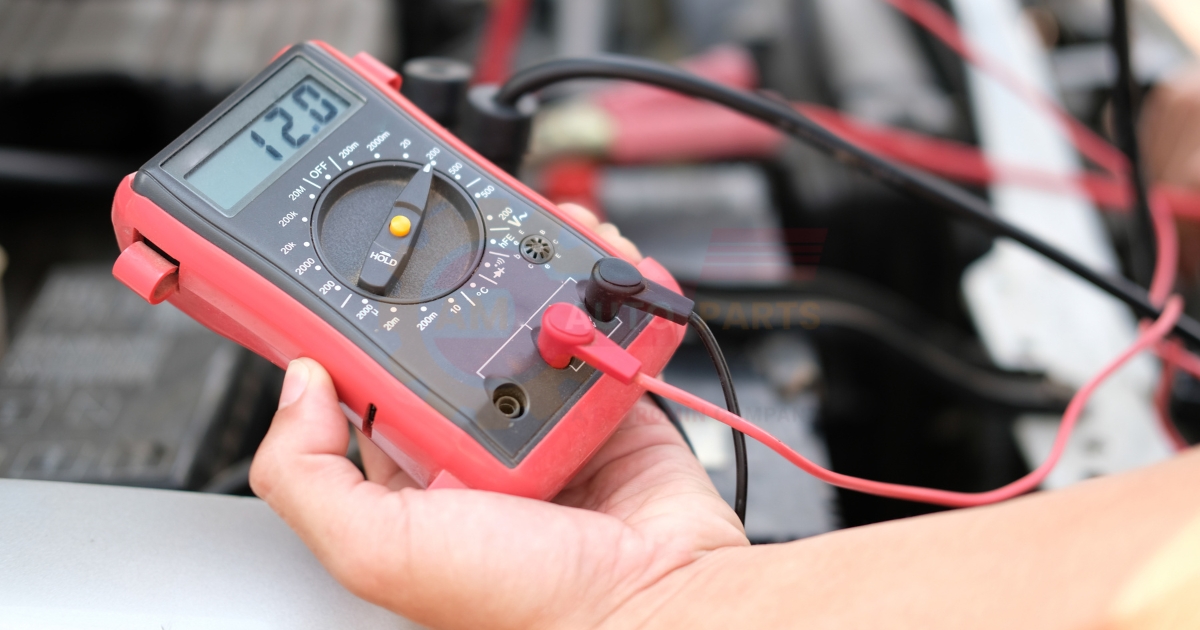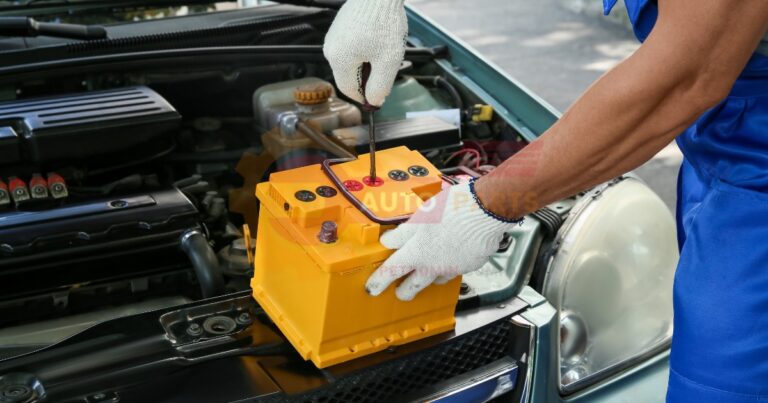How to Check Car Battery Voltage, Auto Battery, and Car Battery Health
Understanding Car Battery Voltage Basics
Normal voltage range for car batteries
Car batteries typically operate within a specific voltage range to ensure optimal performance. A fully charged car battery should read around 12.6 to 12.8 volts when the engine is off. When the engine is running, the voltage should be between 13.7 and 14.7 volts due to the alternator’s charging.
- Fully charged battery: 12.6 – 12.8 volts
- Engine running: 13.7 – 14.7 volts
Factors affecting battery voltage
Several factors can influence the voltage of a car battery. Temperature is a significant factor; cold weather can reduce battery efficiency, while extreme heat can cause overcharging. Additionally, the age of the battery and the condition of the alternator can impact voltage readings.
- Temperature extremes (cold reduces efficiency, heat causes overcharging)
- Battery age (older batteries may not hold charge well)
- Alternator condition (faulty alternators can affect charging)
Tools Needed to Test Car Battery
Multimeter basics
A multimeter is an essential tool for checking car battery voltage. It measures electrical properties such as voltage, current, and resistance. For car battery testing, you’ll primarily use the voltage measurement function.
- Measures voltage, current, and resistance
- Essential for accurate battery voltage readings
Safety precautions when working with batteries
Safety is paramount when working with car batteries. Always wear protective gloves and eyewear. Ensure the car is turned off and the keys are removed from the ignition. Avoid touching both battery terminals simultaneously to prevent electric shock.
- Wear protective gloves and eyewear
- Ensure the car is off and keys are removed
- Avoid touching both terminals simultaneously
Step-by-Step Guide to Check Auto Battery Voltage
Locating the battery
The first step in checking your car battery voltage is locating the battery. In most vehicles, the battery is found under the hood, near the front of the engine bay. Some cars may have the battery in the trunk or under the rear seat.
- Typically under the hood, near the front
- Some cars have batteries in the trunk or under the rear seat
Preparing the multimeter
Set your multimeter to the DC voltage setting, usually indicated by a “V” with a straight line above it. Ensure the probes are correctly connected: the red probe to the positive terminal and the black probe to the negative terminal.
- Set to DC voltage setting
- Connect red probe to positive terminal, black probe to negative terminal
Measuring voltage at battery terminals
With the multimeter prepared, place the red probe on the battery’s positive terminal and the black probe on the negative terminal. Read the voltage displayed on the multimeter. A healthy battery should read between 12.6 and 12.8 volts when the engine is off.
- Place red probe on positive terminal, black probe on negative terminal
- Read voltage on multimeter (12.6 – 12.8 volts for a healthy battery)
Interpreting Battery Voltage Readings
Healthy battery voltage levels
A healthy car battery should read between 12.6 and 12.8 volts when the engine is off. If the voltage is within this range, your battery is in good condition. When the engine is running, the voltage should be between 13.7 and 14.7 volts.
- Engine off: 12.6 – 12.8 volts
- Engine running: 13.7 – 14.7 volts
Signs of a weak or failing battery
If your battery voltage reads below 12.4 volts, it may be weak or failing. Symptoms of a weak battery include slow engine cranking, dim headlights, and electrical issues. If the voltage is below 12 volts, the battery is likely failing and may need replacement.
- Below 12.4 volts: weak battery
- Below 12 volts: failing battery
- Symptoms: slow cranking, dim headlights, electrical issues
Alternative Methods to Check Car Battery Health 
Using a battery load tester
A battery load tester can provide a more comprehensive assessment of your battery’s health. It applies a load to the battery and measures its ability to maintain voltage under load. This test can identify weak batteries that may still show acceptable voltage levels.
- Applies load to battery
- Measures voltage maintenance under load
- Identifies weak batteries
Checking specific gravity with a hydrometer
A hydrometer measures the specific gravity of the electrolyte in each cell of the battery. This can indicate the state of charge and health of the battery. A fully charged battery should have a specific gravity reading of 1.265.
- Measures specific gravity of electrolyte
- Indicates state of charge and health
- Fully charged battery: specific gravity of 1.265
Maintaining Your Car Battery for Longevity
Regular cleaning and inspection
Regularly inspect your car battery for signs of corrosion, dirt, and damage. Clean the terminals with a mixture of baking soda and water to prevent corrosion. Ensure the battery is securely mounted and the connections are tight.
- Inspect for corrosion, dirt, and damage
- Clean terminals with baking soda and water
- Ensure secure mounting and tight connections
Proper charging practices
Avoid overcharging or undercharging your car battery. Use a quality battery charger and follow the manufacturer’s instructions. If your vehicle is not driven frequently, consider using a trickle charger to maintain the battery’s charge.
- Avoid overcharging and undercharging
- Use a quality battery charger
- Consider a trickle charger for infrequent use
Common Car Battery Issues and Troubleshooting
Corroded terminals
Corroded battery terminals can impede the flow of electricity, leading to starting issues and poor performance. Clean the terminals with a wire brush and a mixture of baking soda and water to remove corrosion.
- Impedes electricity flow
- Leads to starting issues and poor performance
- Clean with wire brush and baking soda mixture
Parasitic drain
Parasitic drain occurs when electrical components draw power from the battery even when the vehicle is off. Common culprits include faulty wiring, aftermarket accessories, and malfunctioning electrical systems. Use a multimeter to identify and fix the source of the drain.
- Electrical components draw power when vehicle is off
- Common culprits: faulty wiring, aftermarket accessories
- Use multimeter to identify and fix source
When to Replace Your Car Battery
Age-related deterioration
Car batteries typically last between 3 to 5 years. As they age, their ability to hold a charge diminishes. If your battery is over three years old, consider having it tested regularly and be prepared to replace it if necessary.
- Typical lifespan: 3 to 5 years
- Diminished charge-holding ability with age
- Test regularly if over three years old
Performance decline indicators
Signs that your car battery may need replacement include slow engine cranking, dim headlights, and frequent need for jump-starts. If you notice these symptoms, have your battery tested and consider replacing it.
- Slow engine cranking
- Dim headlights
- Frequent need for jump-starts
Environmental Factors Affecting Battery Performance 
Temperature extremes
Extreme temperatures can significantly impact battery performance. Cold weather can reduce the battery’s ability to provide sufficient power, while hot weather can cause the battery to overcharge and degrade faster.
- Cold weather: reduces power
- Hot weather: causes overcharging and faster degradation
Humidity and moisture
High humidity and moisture can lead to corrosion on the battery terminals and connections. This can impede the flow of electricity and reduce battery performance. Regularly inspect and clean the battery to prevent moisture-related issues. Battery lifespan varies Different batteries last for different amounts of time depending on how they are used and taken care of Car battery production involves making powerful energy storage devices These batteries are essential for starting and powering vehicles
Charging Vehicle Batteries is how we put energy back into electric cars and trucks This process helps vehicles run longer and keeps them ready for driving Battery capacity measurement
Battery replacement threshold is the point when a device’s battery becomes too weak and needs to be changed It helps users know when it’s time to get a new battery for their gadget Battery voltage range The
Push start automobile Cars with Vehicle power optimization helps cars use less fuel and go farther It makes engines work better so vehicles can be more efficient
- Leads to corrosion on terminals and connections
- Impedes electricity flow
- Regular inspection and cleaning recommended
DIY vs Professional Battery Testing
Benefits of professional diagnostics
Professional battery testing can provide a more accurate assessment of your battery’s health. Technicians use advanced equipment to test the battery’s capacity, voltage, and overall condition. This can help identify issues that DIY methods might miss.
- More accurate assessment
- Advanced equipment used
- Identifies issues DIY methods might miss
When to seek expert help
Seek expert help if you experience persistent battery issues despite regular maintenance. Professional diagnostics can pinpoint underlying problems and recommend appropriate solutions, ensuring your vehicle’s reliability.
- Persistent battery issues
- Professional diagnostics for underlying problems
- Ensures vehicle reliability
Frequently Asked Questions (FAQs)
What voltage is too low for a car battery?
A car battery is considered too low if the voltage drops below 12.4 volts when the engine is off. At this level, the battery may struggle to start the engine and power the vehicle’s electrical systems. If the voltage falls below 12 volts, the battery is likely failing and should be replaced.
How can I check my car battery without a multimeter?
You can check your car battery without a multimeter by observing the battery’s physical condition and performance. Look for signs of corrosion, swelling, or leaks. Additionally, pay attention to how the vehicle starts; slow cranking or dim headlights can indicate a weak battery.
Can a car battery be too old to jump start?
Yes, a car battery can be too old to jump start. As batteries age, their internal components degrade, reducing their ability to hold a charge. If a battery is too old, even a jump start may not provide enough power to start the engine, indicating the need for replacement.
Can a car battery be too old to jump start?
Yes, a car battery can be too old to jump start. As batteries age, their internal components degrade, reducing their ability to hold a charge. If a battery is too old, even a jump start may not provide enough power to start the engine, indicating the need for replacement.
How can I check my car battery without a multimeter?
You can check your car battery without a multimeter by observing the battery’s physical condition and performance. Look for signs of corrosion, swelling, or leaks. Additionally, pay attention to how the vehicle starts; slow cranking or dim headlights can indicate a weak battery.
What voltage is too low for a car battery?
A car battery is considered too low if the voltage drops below 12.4 volts when the engine is off. At this level, the battery may struggle to start the engine and power the vehicle’s electrical systems. If the voltage falls below 12 volts, the battery is likely failing and should be replaced.






